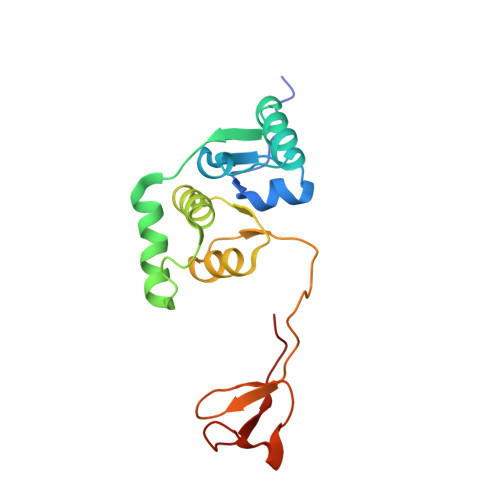Structural and functional analysis of the archaeal endonuclease Nob1.
Veith, T., Martin, R., Wurm, J.P., Weis, B.L., Duchardt-Ferner, E., Safferthal, C., Hennig, R., Mirus, O., Bohnsack, M.T., Wohnert, J., Schleiff, E.(2012) Nucleic Acids Res 40: 3259-3274
- PubMed: 22156373
- DOI: https://doi.org/10.1093/nar/gkr1186
- Primary Citation of Related Structures:
2LCQ - PubMed Abstract:
Eukaryotic ribosome biogenesis requires the concerted action of numerous ribosome assembly factors, for most of which structural and functional information is currently lacking. Nob1, which can be identified in eukaryotes and archaea, is required for the final maturation of the small subunit ribosomal RNA in yeast by catalyzing cleavage at site D after export of the preribosomal subunit into the cytoplasm. Here, we show that this also holds true for Nob1 from the archaeon Pyrococcus horikoshii, which efficiently cleaves RNA-substrates containing the D-site of the preribosomal RNA in a manganese-dependent manner. The structure of PhNob1 solved by nuclear magnetic resonance spectroscopy revealed a PIN domain common with many nucleases and a zinc ribbon domain, which are structurally connected by a flexible linker. We show that amino acid residues required for substrate binding reside in the PIN domain whereas the zinc ribbon domain alone is sufficient to bind helix 40 of the small subunit rRNA. This suggests that the zinc ribbon domain acts as an anchor point for the protein on the nascent subunit positioning it in the proximity of the cleavage site.
- Institute for Molecular Biosciences, Johann-Wolfgang-Goethe University, Max-von-Laue Str. 9, 60438 Frankfurt, Germany.
Organizational Affiliation:

















